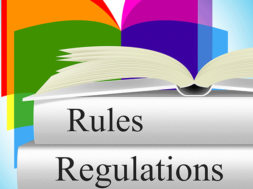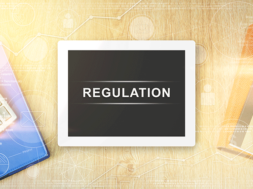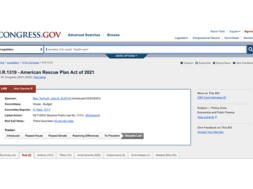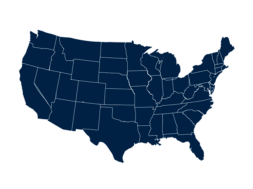
The Gainful Employment Domino Effect
By Peter Terebesi, President & CEO, www.HigherEdExecutives.com
Everybody’s talking about Gainful Employment. Since its inception, the U.S. Department of Education has released nearly a hundred Electronic Announcements and Dear Colleague Letters, including manuals for everything from enrollment reporting to challenges and appeals and there’s more coming. They’re dense, complicated reads, packed with detail, after seemingly endless detail, intended to help schools understand and comply with the regulations that took effect last year. Everything related to the Gainful Employment regulations is complicated and for some schools, staying up to date has become a full-time job.
In October, draft GE Debt-to-Earnings (D/E) rates were sent to schools. These files also contain backup details which is the underlying data the Department will use to calculate the final D/E rates. The Department’s data is comprised of information gathered in the earlier collection cycles such as program information and completers list, plus earnings information collected from the Social Security Administration. It’s important that schools carefully review the GE Debt-to-Earnings backup data to make sure its right because this data will be used to calculate the median loan debt for students in each of an institution’s GE programs. If there are errors, the data can be challenged during the draft cycle only and once the draft cycle closes, it gets locked in.
There are three key things schools should look for when reviewing their GE D/E backup data to determine if a challenge can be made.
First, make sure that all of the students are your students and that the loans in the detail actually belong to them. It sounds simple, but NSLDS isn’t perfect. When Social Security numbers are mismatched in FSA systems, a student can be improperly assigned to your school as a result and that can affect your school’s final rate.
Next, double-check the loan period dates. Incorrect loan period dates can cause borrowers to be included in the wrong year. For schools in the zone and in danger of failing, ensuring that students are properly assigned can make the difference between passing and failing.
Finally, make sure the loan debt amount is correct.
Although you can’t challenge the loan debt amount, you can challenge the loan amount, cancellation amount or refund amount.
If you’ve got errors in any of these areas, you should consider submitting a challenge to get it corrected. Schools have 45 days to correct erroneous loan data by submitting a challenge through the Department’s NSLDS website and this year the challenge period runs from Oct. 24 until Dec. 7.
Most schools and colleges have gotten the hang of the reporting process and are reporting good data, but for many others, the data they have been reporting to NSLDS is fraught with errors that could come back to bite them. As part of the program reporting cycle each year, schools are allowed to correct certain GE program data elements during a brief window following the reporting deadline. In fact, in September, ED strongly suggested that schools go back and check and correct what they reported in the most recent 2015-2016 reporting periods because of problems with the data. Many of the issues schools encounter in the subsequent completers list and draft D/E cycles actually stem from errors reporting GE program data in prior cycles.
Submitting accurate GE program information is critical to ensuring that the GE Debt-to-Earnings data is applied accurately for each program. The annual submission of GE program data by institutions provides the foundation on which all of the other GE data is applied.
Reporting inaccurate program level data, has a domino effect on the resulting calculations that will be used to create a program’s ratio and as a result, may jeopardize its eligibility if the errors cause the resulting D/E rates to fall below the acceptable thresholds.
According to the U.S. Department of Education’s office of Federal Student Aid, some institutions haven’t submitted accurate data for the most recent program data reporting cycle. Some have failed to meet the reporting deadline altogether. ED is concerned enough about the quality of the data and timeliness of the reporting that they are expected to begin sending notices to institution Presidents and CEOs later this month, warning affected schools that their continued Title IV participation may be subject to provisional certification or even revoked as a result of inaccurate or untimely GE program reporting. There are penalties, beyond those anticipated to be applied for failing programs for those that aren’t proactive.
It’s hard to believe that despite the department’s widely publicized efforts some schools, albeit fewer than last year, didn’t report with some still claiming they were unaware. Under the HEA, educational programs must lead to either a degree awarded by a public or nonprofit institution. If they don’t, they must lead to gainful employment in a recognized occupation. Thus, all programs at for-profit institutions are considered Gainful Employment programs and are subject to reporting, with exceptions only for preparatory coursework and certain existing bachelor’s degrees in liberal arts. Public and nonprofit institutions have Gainful Employment programs too. At these schools, any non-degree program that awards a certificate or diploma is considered a Gainful Employment program.
When reporting information on GE programs (GE program data), schools provide information to NSLDS about each GE program they offered, and certain data about each student enrolled in each program during a given award year. The reporting process is cumbersome for many schools I’ve talked to, especially those that don’t have student management systems, or have systems that lack adequate reporting capabilities. For small schools, data is often gathered manually and subject to human error. For others, poorly kept administrative records and shoddy historical data complicate things further.
For those responsible for their institution’s reporting I’ve summarized the top errors in gainful employment program reporting.
Private loans, tuition and fees, and allowance for books, supplies and equipment
Institutions are reporting inaccurate figures that don’t correctly reflect the amounts of loans, fees, and allowances that the student incurred while attending a GE program. Institutions are expected to report the total amount of tuition and fees assessed to the student for the entire program, not just for the award year, before any scholarships or discounts. When a student has withdrawn and later re-enrolls, the totals schools report must include the amounts from the student’s prior enrollment before the withdrawal.
Institutional debt
Another area ED cites is inaccuracies in reporting “institutional debt.” The institutional debt that must be reported is the amount that is owed to the institution by the student as of the date of the student’s withdrawal from or completion of the GE program. One school tried to say that because they didn’t pursue students for unpaid balances once they’ve left school, there was no “institutional debt.” What do you think ED said?
Period of attendance
Multiple enrollments (re-enters and re-enrolls, additional certificates etc.) require multiple records to be reported; one for each enrollment record. If your school doesn’t create a separate enrollment record in your student management system or records you should consider modifying your record keeping processes. When a student has withdrawn and later re-enrolls, two separate GE records must be reported to meet the reporting requirements. Fail to report all enrollments in the given reporting period and you’re in the danger zone.
Changing CIP codes
If you’ve updated, corrected or changed the Classification of Instructional Program (CIP) code for a GE program, the program must be reported under the new CIP code for all award years, even for those award years when the program was operating under a different CIP code. This is necessary for the program to be classified as one GE program across multiple years for the purposes of D/E rates calculations and other metrics.
Adding new programs
Got a new GE program (defined for these purposes as a unique CIP code/credential level combination) that has not previously been reported? You’ve got to report it by the annual GE reporting deadline (Oct. 1) each year. Keep in mind, entire programs cannot be added or deleted during the Draft GE Completers List correction process. If you have this kind of error, you have to go back and correct the GE program data you submitted to NSLDS. Along this same topic it’s a good idea to log in to your institution’s E-App and put an end date on old programs that you are no longer offering. Otherwise, ED’s going to be looking for your institution to report GE program data.
Reviewing and correcting errors
If you use the GE batch file submission process through your school’s SAIG Mailbox, be on the lookout for an Error/Acknowledgment file after you submit your file. Once it has been processed, you’ll receive an Error/Acknowledgement file and have just 10 days to correct any errors.
Confirming reporting
Institutions can save themselves a lot of surprises by simply confirming the reports they submitted were accepted on NSLDS. Take it one step further and check out the program info data too to make sure it’s accurate. Want to know how? Check out the Gainful Employment List and Gainful Employment Detail pages on the NSLDS Professional Access website to confirm to see the GE records and details.
The Department’s Information for Financial Aid Professionals (IFAP) website has a dedicated page for Gainful Employment Information. It contains the most up to date information and resources to assist schools in meeting the regulatory requirements including a GE FAQ and links to training resources. Schools that plan on challenging data or submitting an appeal can find info there too. https://ifap.ed.gov/GainfulEmploymentInfo/indexV2.html
Institutions with questions pertaining to this or other matters of compliance with accreditation and federal student aid standards are welcome to contact our offices for additional assistance.
PETER TEREBESI is a compliance expert in Title IV Federal Student Aid and Accreditation. He has been serving post-secondary institutions for nearly two decades and has helped hundreds of schools, colleges, and universities across the nation, meet the demands of today’s complex regulatory challenges.
Contact Information: Peter M.Terebesi // President and CEO // Higher Ed Executives // 203-836-4806 // PeterT@Ed-executives.com // Social Media: @FSAPete











